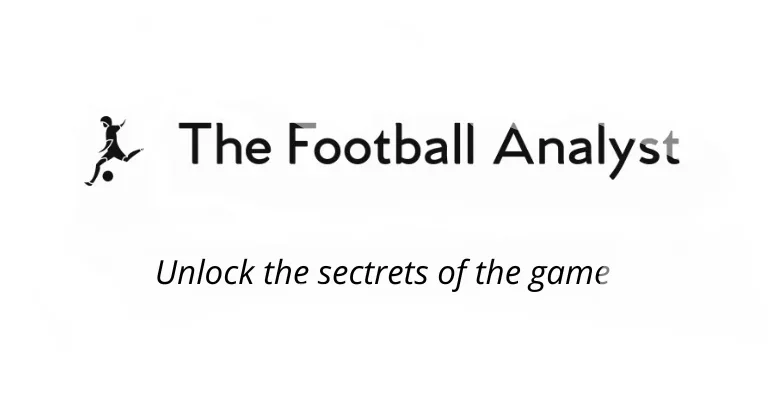Expected Goals (xG) has become a staple in football analysis, giving coaches, analysts, scouts, and fans a way to evaluate chance quality. But xG only tells part of the story. It measures the probability of scoring at the moment a shot is taken, based on location, angle, and other pre-shot factors — without considering what happens after the ball leaves the foot.
This is where Post-Shot Expected Goals (PSxG) comes in. By evaluating the quality of the shot itself — including placement, power, and trajectory — PSxG adds a layer of insight that can transform how we assess both attackers and goalkeepers.
The Limitation of Standard xG
Traditional xG models are built on contextual and positional data:
- Shot location (distance from goal)
- Angle (shooting lane to target)
- Body part used (foot vs. header)
- Assist type (cross, through ball, cut-back)
- Pressure on shooter (where available)
This is invaluable for judging chance creation — how dangerous a situation was before the shot. However, it doesn’t account for execution.
Example:
- A striker takes a shot from 12 yards in a central position (xG = 0.30).
- If he scuffs it towards the goalkeeper, the actual chance of scoring is much lower.
- If he curls it perfectly into the top corner, the real chance of scoring is much higher.
xG treats both as identical. PSxG makes the distinction.
What Post-Shot xG Measures
PSxG uses tracking and ball-flight data to model the probability of a specific shot resulting in a goal, based on:
- Ball trajectory (high, low, curving, straight)
- Shot placement (inside post, near keeper, top corner)
- Shot velocity (harder shots generally harder to save)
- Goalkeeper positioning (some models factor this in)
Instead of asking, “How good was the chance?”, PSxG asks, “How good was the shot?”.
The key difference:
- xG = measures the situation before contact.
- PSxG = measures the execution after contact.
Why It Matters for Player Evaluation
1. Separating Finishers from Chance Beneficiaries
Some strikers post high goal numbers because they consistently get into elite scoring positions. Others finish at a higher rate than the quality of their chances suggests.
By comparing Goals – xG and Goals – PSxG, you can see:
- xG overperformers: Often linked to good finishing, but could also be short-term variance.
- PSxG overperformers: More likely to be genuinely elite finishers, as execution quality is measured.
For example:
- A forward whose PSxG is consistently higher than his xG is striking the ball better than expected for his shot locations.
- A forward whose PSxG is consistently lower may be getting into great spots but wasting them.
2. Identifying Hidden Goalkeeping Quality
For goalkeepers, PSxG offers a more accurate baseline for expected saves.
Example:
- Facing 10 shots with a combined xG of 1.5 could mean the shots were central and tame, or they were hit perfectly.
- PSxG adjusts for shot difficulty, so a keeper facing 1.5 xG but 3.0 PSxG is dealing with much tougher strikes.
By comparing Goals Conceded – PSxG Faced, analysts can isolate whether a keeper is saving more or fewer goals than expected after accounting for shot quality.
3. Scouting and Recruitment
In player scouting, blending xG and PSxG helps distinguish between:
- Movement-based threats: Players who find high-xG chances through intelligent positioning.
- Technique-based threats: Players who elevate average chances through superior ball-striking.
A club looking for a clinical finisher may target a forward with high PSxG overperformance, even if his raw xG output is modest.
Practical Example
Imagine two strikers over a season:
| Player | xG | PSxG | Goals |
|---|---|---|---|
| Striker A | 12.0 | 13.8 | 14 |
| Striker B | 15.5 | 14.2 | 13 |
Interpretation:
- Striker A is converting average positions into above-average shots. His PSxG > xG suggests superior finishing.
- Striker B is getting into better positions (higher xG) but isn’t striking the ball as well (PSxG lower than xG).
This nuance matters for recruitment, development plans, and tactical fit.
Limitations and Context
Like any metric, PSxG has caveats:
- Sample size: Shooting is volatile; small samples can mislead.
- Data availability: Requires ball-tracking or detailed shot data not always accessible.
- Contextual factors: Confidence, fatigue, defensive pressure, and game state still influence outcomes beyond what PSxG captures.
For best use, PSxG should be combined with:
- Shot maps
- Video analysis
- Tactical context (role, team style, opposition)
Conclusion: A Layer, Not a Replacement
Post-Shot xG doesn’t replace traditional xG — it complements it.
- xG tells us the quality of the chance created.
- PSxG tells us the quality of the shot taken.
Used together, they reveal whether a player is simply in good positions or truly executing at an elite level. For coaches, analysts, and scouts, this distinction can change transfer decisions, tactical roles, and even contract valuations.
In modern football, where marginal gains decide titles and careers, moving beyond xG to integrate PSxG is not just an analytical upgrade — it’s a competitive necessity.
